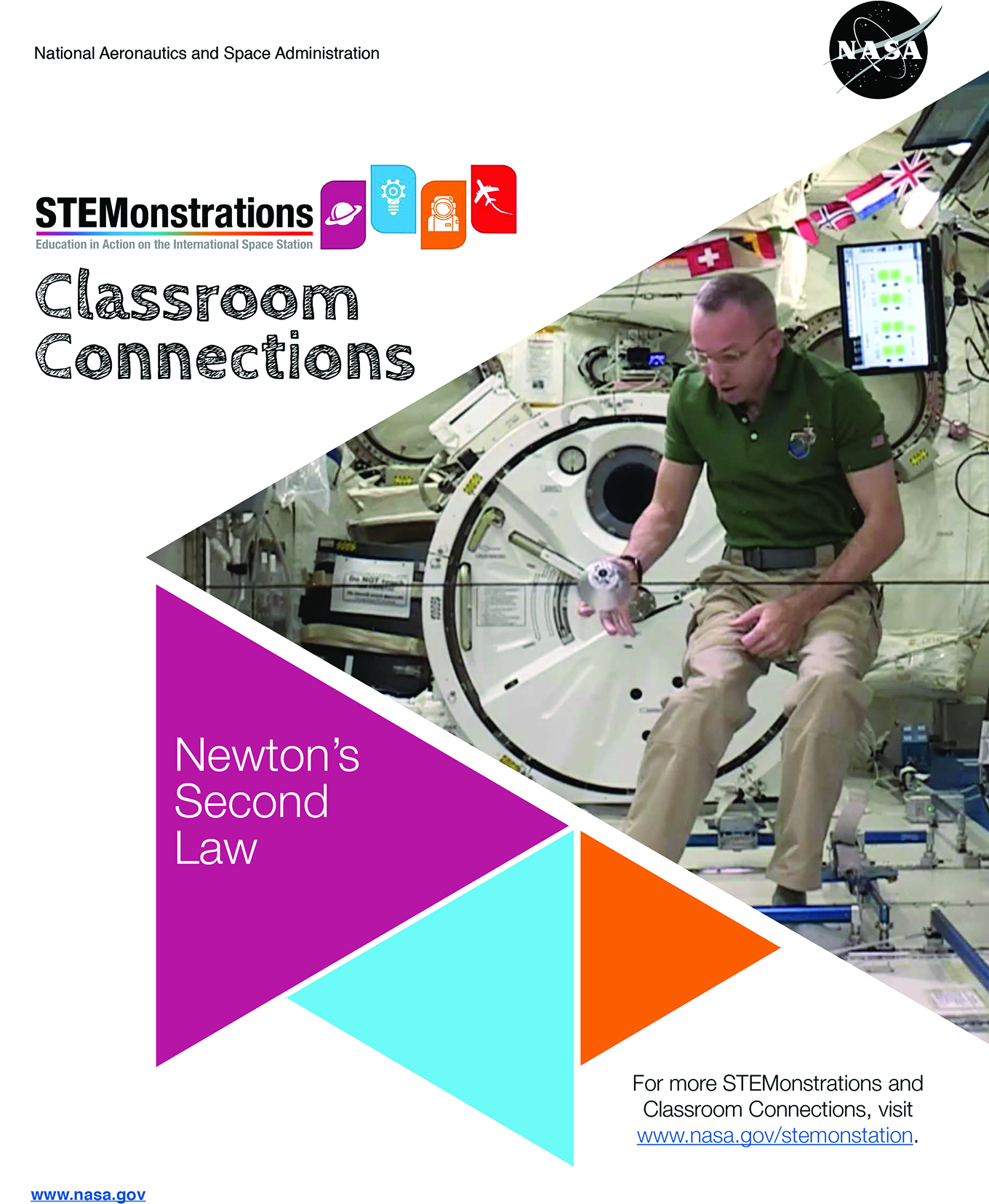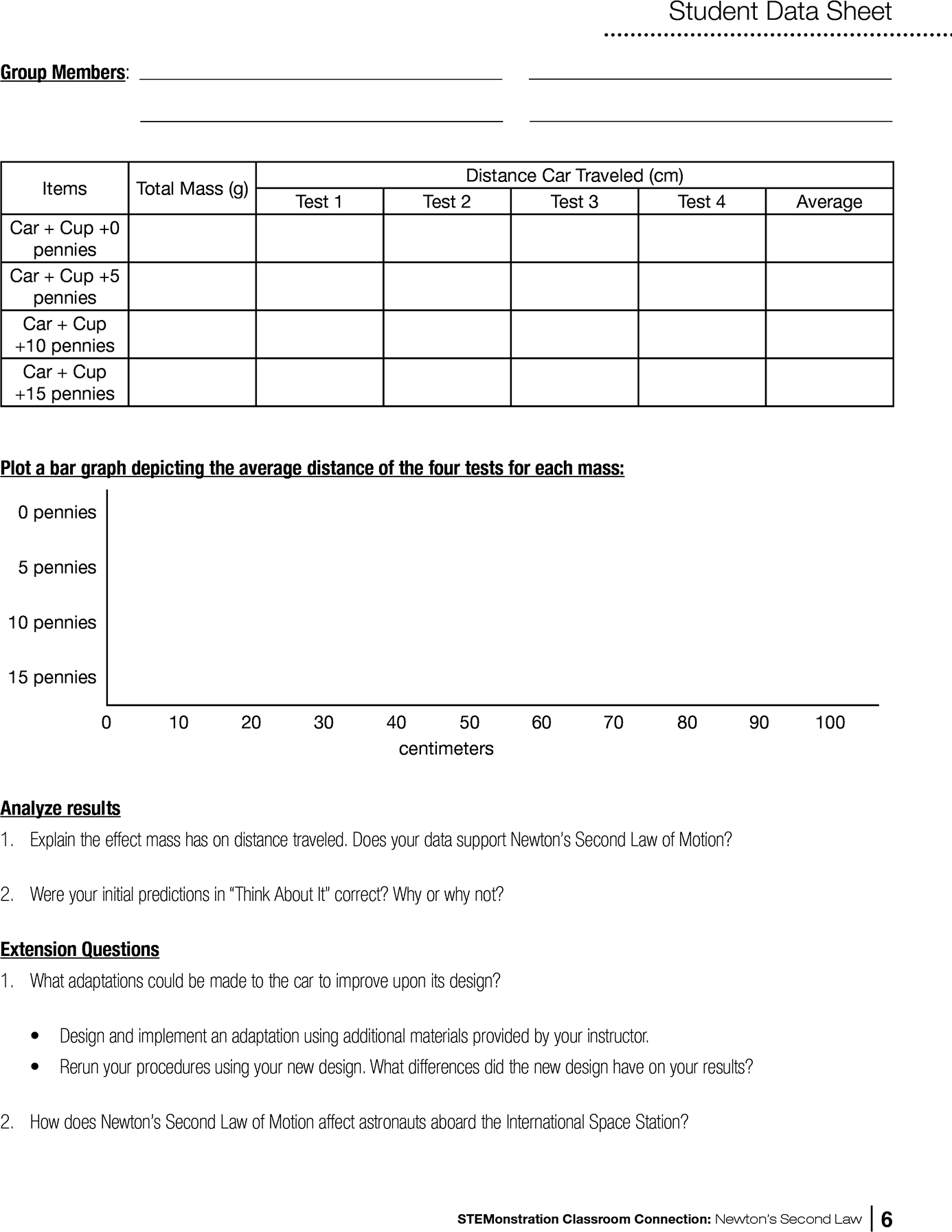Classic Lessons 2.0
STEMonstrations aboard the International Space Station
Newton’s Second Law
Science Scope—February 2020 (Volume 43, Issue 6)
By Becky Kamas
While many students may believe their teacher is from outer space, during the 2017–2018 school year, two former teachers lived there. Astronauts and former middle school science teachers Joe Acaba and Ricky Arnold each spent about six months aboard the International Space Station (ISS) where they conducted scientific research and supported a variety of educational activities they helped develop as part of NASA’s Year of Education on Station. Not only were Acaba and Arnold teaching from space, but the whole crew also got in on the year’s education theme, becoming teachers in space and conducting out-of-this-world lessons for students.
Throughout the Year of Education on Station, astronauts filmed a variety of STEM demonstrations, known as STEMonstrations, while in the unique microgravity environment of the orbiting laboratory. Each STEMonstration focuses on a STEM concept and includes a video and a “Classroom Connection” lesson plan tied to the Next Generation Science Standards (NGSS; NGSS Lead States 2013). All STEMonstration videos and lesson plans are available as a free download on NASA’s STEMonstrations website (see Resources). This article highlights Newton’s Second Law of Motion STEMonstration and uses the 5E learning model to describe a 90-minute investigation for students in the classroom (see Figures 1 and 2).


Engage
Although some teachers may want to set the stage by providing some background information, typically, I start this lesson by going straight to the STEMonstration video of astronaut Randy Bresnik demonstrating Newton’s Second Law aboard the ISS (see Resources). Bresnik welcomes students onboard and demonstrates the law by applying equal force to objects of varying mass. Moving from a small tube of lip balm to a small Orion spaceship model, and finally, to a large cargo transfer bag, each item is launched across the module by bungee cord. Bresnik takes care to ensure he pulls the bungee cord back the same distance each time. As the objects fly across the screen, the difference in acceleration is very noticeable.
While demonstrating Newton’s second law, Bresnik explains that applying force to a large mass results in smaller acceleration than when applying the same force to a smaller mass object. In this video, smaller objects are less massive than the larger objects, so it may be necessary to explain to students that size is not necessarily an indication of mass. The run-time of the video is approximately 2 ½ minutes, leaving plenty of time to watch the video again (if needed) and engage students in a discussion about what they observed.
Explore
Extend
There are a few different ways you can extend this overall lesson. You can bring in a little engineering design and have students create their cars instead of using the provided template. You can further challenge students to see who can design a car that will carry 10 pennies the farthest, making students think about how to design a car that has less mass at the start.
Additionally, NASA Education has resources related to helping students understand the differences between mass and weight, as well as additional lesson plans about Newton’s laws of motion. These resources can be used to reinforce concepts further or to teach a unit on Newton’s law of motion (see “Mass Versus Weight Educator Guide” in Resources).
Evaluate
In the past, we have not used formal evaluations for this lesson, as we often conduct these activities in informal settings. Throughout the experience, students have been informally assessed through both class and group discussions. Questions on the student data sheet can also be used to determine student understanding. To further check for understanding, you may want to have students complete an exit ticket where they individually answer the question: “Using your balloon pump and straw track, what would you have to do to get a car holding 15 pennies to go the same distance as a car with no pennies in it?” You are looking for answers that have to do with applying more force, since the first car has more mass.
An additional idea for the exit ticket would be to have students list any questions they have about Newton’s Second Law of Motion or any of the day’s activities. This information can help the teacher determine student needs on a more individualized basis.
Conclusion
The space station is not just a laboratory; it is a classroom—a place where we can teach and showcase science in a microgravity environment. By placing simple science concepts in the exciting context of space, we provide an interesting hook for students. The Newton’s Second Law of Motion STEMonstration, along with the others available online through NASA Education, can help educators bring science and space together for their students, inspiring and engaging the next generation of explorers.
Earth & Space Science Lesson Plans STEM Middle School

